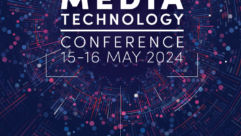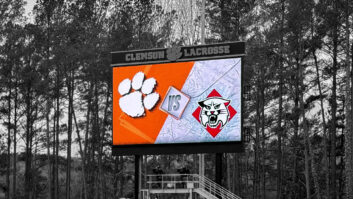#@$% THE TECHNOLOGY!
Feb 1, 2001 12:00 PM,
Brian Edwards
You wouldn’t expect a guy who’s owned a technology company for close to 20 years to write an article condemning his own livelihood. Maybe it’s the dawning of the new millennium; maybe it’s all the time I’ve been spending with writers; or maybe it’s all that “safe” radiation from my cell phone. Who knows? What I do know is that when I look back on the incredible progress technology has made in the themed entertainment world over the past decade, I am truly blown away by both the dreams it has brought to reality and the senselessness with which it has been used. I’ve come to discover that without a compelling and engaging story to justify its existence, technology is just a bunch of metal and plastic and silicone. And thus, I say, #@$% it!
The Internet has been interpreted everywhere as a revolution of inconceivable proportions. We’ve even seen it compared to the Industrial Revolution. But remember it took 30 years to figure out how to use the steam engine. If history repeats itself, then we might guess that the Internet is in its infancy. But just how does this revolution affect our industry? And furthermore, how does our industry affect this revolution?
As more and more people are tapping into the conveniences that the Net provides, we find that more and more of our new clients are corporations, struggling to find new ways to reach out to their customers and participate in the “experience economy.” In market-speak, we might say that we’re seeing new methods of “brand building.”
Corporate clients have little experience in building customer-friendly, 3-D representations of themselves. Over the years, they’ve become well-versed in print ads, television commercials, point-of-purchase, even sponsorships. But now, these same people are attempting to interpret their brands as experiences — to create branded environments where they can control every aspect of a guest’s experience. And to be successful in these uncharted waters, they need our help.
Does a videowall in a retail store make you want to shop in that store? Do plasma screens beckon your wallet out of your pocket? How about those cute little LCD screens that can be put in counters, in stairs, above urinals — are they magnets for your attention and credit cards? I hope not!
While any technology is novel when it first appears, it soon becomes a part of the landscape. Videowalls, plasmas and LCD screens were attention-getters when they were first introduced. But now, we must view them as simply a modern means of communication, tools that should become invisible as they tell an engaging story.
Edwards Technologies Inc. recently finished working on the audio, video and show control systems for the world’s largest brand environment to date — VW’s Auto-stadt (Auto City). This 35-acre visitor center in Wolfsburg, Germany, cost over US$500 million to build and is brimming with technology. But the stars are not the 360° video theater, the dozens of touch-screens or the motion-base simulator — the stars are the cars.
It’s the realization that technology must take a back seat to the tale that caused ETI to join forces with industry writer/creative director Ryan Harmon to unveil a sister company called Story Dept. Within days of hanging our shingle, Story Dept. found its niche in the conceptual design and production of story-based attractions. We are presently working with a number of large corporations to carefully interpret their brands into compelling guest experiences. Rather than selecting what tools to use up front, we focus on exactly what stories need to be told. The technology we employ is that which best tells these stories in unique and engaging ways.
Sounds logical, right? Surprisingly, very few people work in this fashion. I can’t tell you how many times I’ve seen a simulator used to tell a story that doesn’t require motion, video monitors and speakers hung in places where they are little more than a nuisance, and expensive plasma screens installed where a cleverly dressed standard monitor could have been just as aesthetically pleasing at a fraction of the cost.
The trendy but inappropriate misapplication of technology results in needless spending and less-than-successful guest experiences. The sad part is that a corporation often misinterprets the failure of its themed entertainment venture, assuming that the business itself is to blame, rather than the uninspired experience.
And so, my fellow industry-types, I cannot stress how important it is to just say, “#@$% the technology!” and then to call in a storyteller to drive the concept. Take it from a reformed gadget guru: Once you get your story straight, you’ll be amazed at how easy it is to tell!
Brian Edwards is president and CEO of Edwards Technologies Inc. and CEO of Story Dept. He has designed theme parks, retail stores, museums, world’s fairs, restaurants and corporate attractions around the world. He served as president of the Themed Entertainment Association.










